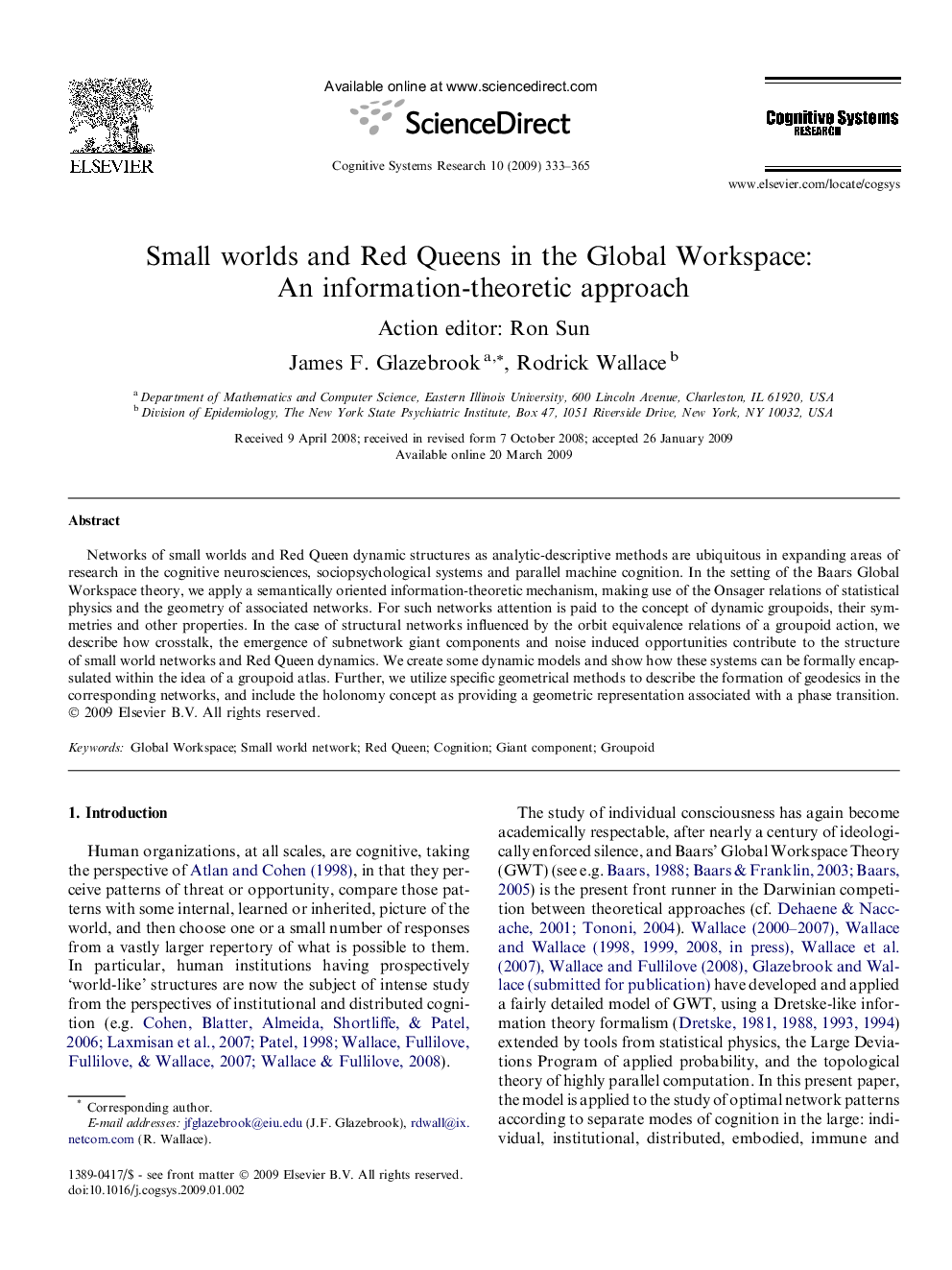| Article ID | Journal | Published Year | Pages | File Type |
|---|---|---|---|---|
| 378557 | Cognitive Systems Research | 2009 | 33 Pages |
Networks of small worlds and Red Queen dynamic structures as analytic-descriptive methods are ubiquitous in expanding areas of research in the cognitive neurosciences, sociopsychological systems and parallel machine cognition. In the setting of the Baars Global Workspace theory, we apply a semantically oriented information-theoretic mechanism, making use of the Onsager relations of statistical physics and the geometry of associated networks. For such networks attention is paid to the concept of dynamic groupoids, their symmetries and other properties. In the case of structural networks influenced by the orbit equivalence relations of a groupoid action, we describe how crosstalk, the emergence of subnetwork giant components and noise induced opportunities contribute to the structure of small world networks and Red Queen dynamics. We create some dynamic models and show how these systems can be formally encapsulated within the idea of a groupoid atlas. Further, we utilize specific geometrical methods to describe the formation of geodesics in the corresponding networks, and include the holonomy concept as providing a geometric representation associated with a phase transition.
